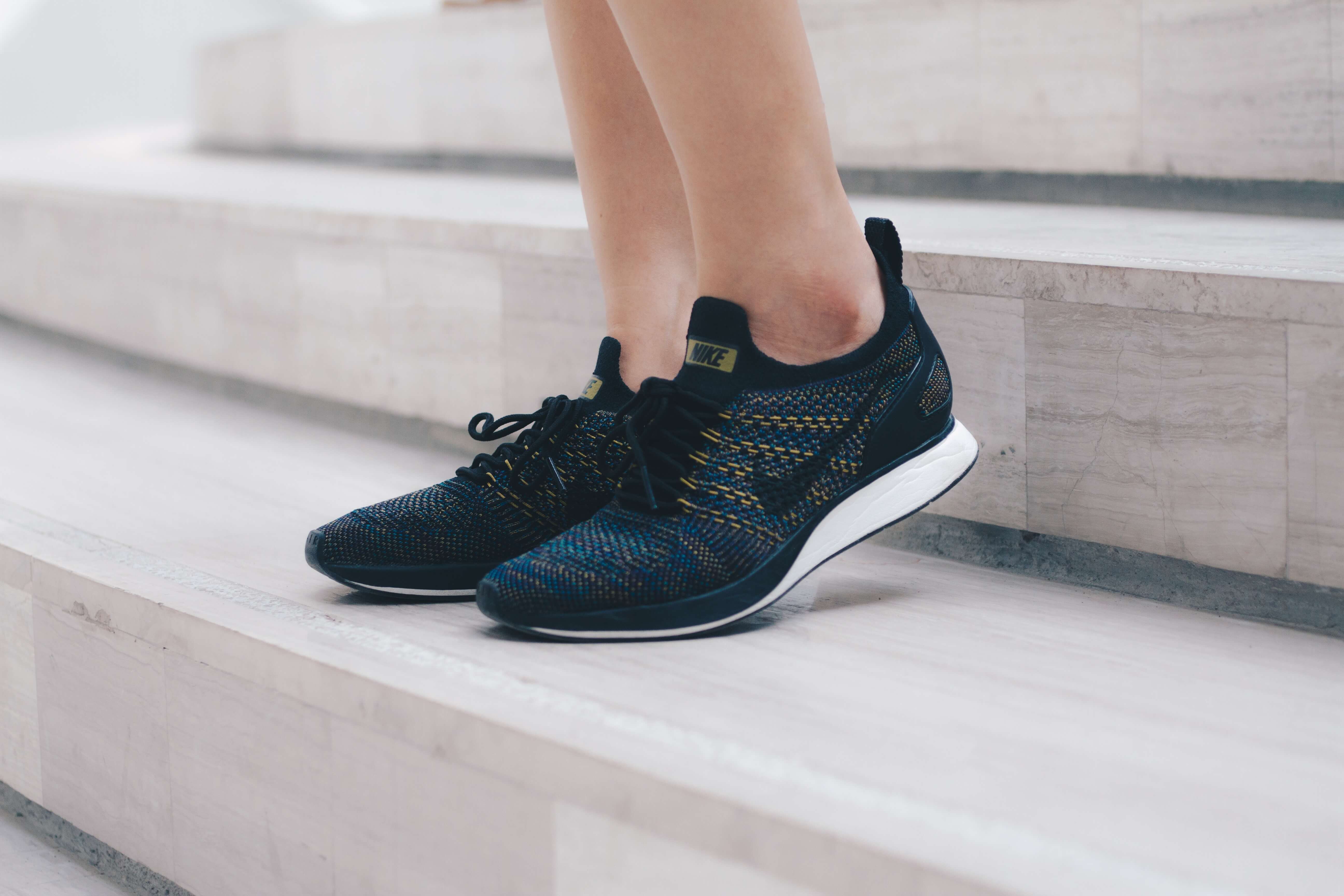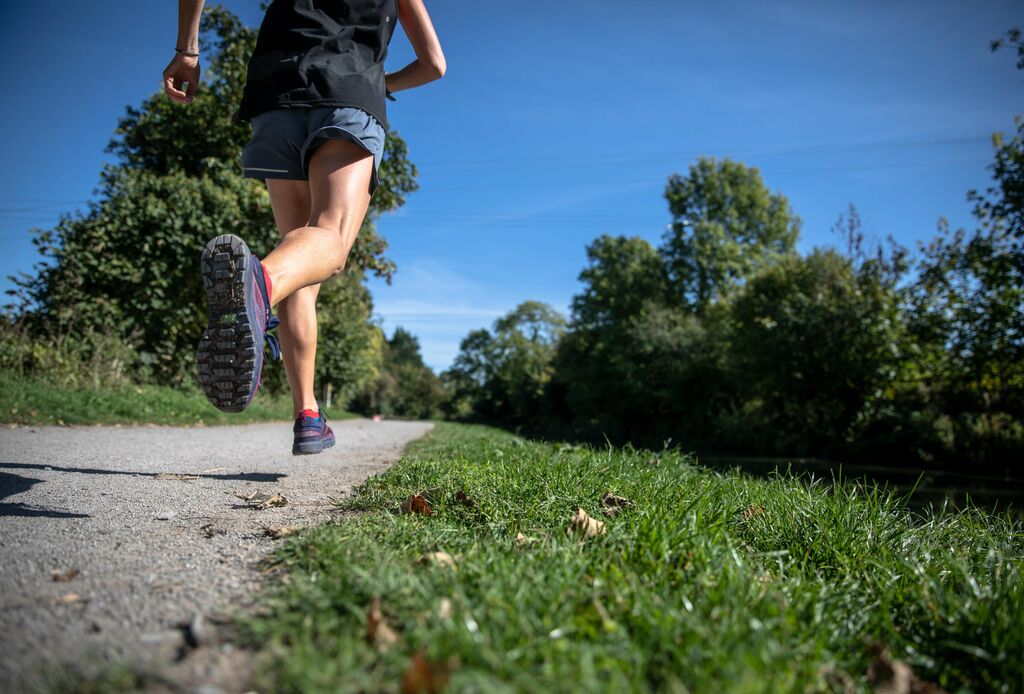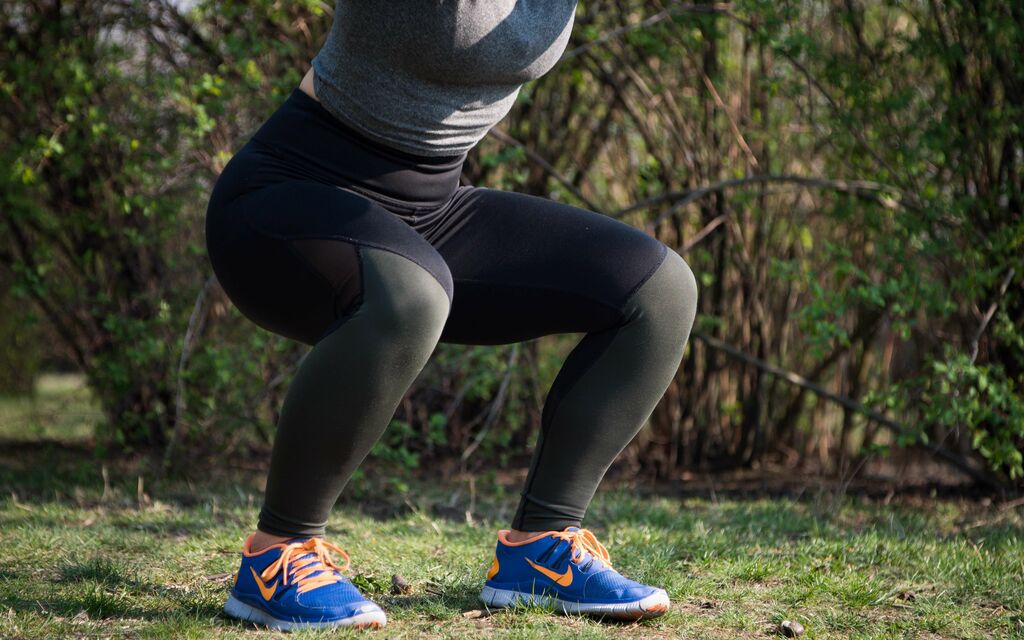Common Running Mistakes All Runners Are Guilty Of

Hunched shoulders, tight fists, and big strides. These are some of the common running mistakes we are all guilty of at one point or another.
Even the most advanced runners have to address issues with and make adjustments to their form. This includes some easy fixes like standing tall. Other changes to form are harder to change and require constant attention.
Besides form, there are also other common running mistakes.
From running without water to not getting the “right” shoes, there are quite a few things runners need to be mindful of.
We have been there, done that. But the good news is that the quicker we are aware of the problem the sooner we can fix it.
Here are the most common running mistakes and fixes.
Not Getting Fit For Shoes
The biggest and worst mistake runners make it not getting properly fitted for running shoes.
It isn’t as simple as knowing show size and getting a new pair of sneakers. Being fitted at a running store means the shoe is tailored to the runner based on their needs.
This includes if they need lots of cushion and support, how they pronate and how the shoe feels on. Some sneakers mean going up a size.

And this shouldn’t be a one-time thing. All runners should get fitted for shoes regularly. The sneakers need to be replaced every 300t o 350 and even seasoned runners should get fitted yearly.
Fix this issue by shopping at running stores instead of online or general department stores. Those who work in a running store are able to recommend the best sneakers based on that runner’s needs.
Getting the right shoes to prevent discomforts like blisters and more serious issues like shin splints or other injuries.
Poor Clothing Choices
Those who are new to running might just throw on any spare cotton t-shirt they have a hit the ground running. This is a big mistake once the runner starts sweating.
Runners often make poor clothing choices. They should run in breathable and moisture-wicking fabrics that keep them cool and won’t cause chafing.
This also means knowing when to layer up. If it’s colder that day, bring an outer layer. It’s better to take clothes off than be freezing during a run.
Fix this mistake by looking at guides as to what runner’s should wear based on season and temperature.
Runners don’t need to spend a lot of money on new running clothes. There are plenty of affordable brands for activewear. Shop when there are sales.
Also, make sure to keep a spare shirt in the gym bag or car to immediately change out of a sweaty shirt post run to avoid getting the chills.
Overtraining
This is a major problem. We often get so excited to start a running routine or to start training for a race that we head out every day. Ramping up the mileage too soon or running too much without allowing the body to recovery will lead to injury.
This can be anything from shin splints, IT band issues, sprains, and even stress fractures when running too hard.
Read also about running shoes for shin splints.
To fix this running mistake, increase mileage slowly. Gradually increase the number of miles for the longest run of the week. And take the rest days.
It’s even a good idea to ease on the mileage every few weeks. Runners can always slowly pile the miles back on.

Bad Form
No runner has perfect form. There is just no such thing.
But there is an ideal form that reduces the risk of injury and helps improve performance. This includes telling tall as if there were a string pulling the head up. Relax the shoulders.
A big mistake is swinging the arms across the body with tight fists. Pretend to be holding something in the hands and swing the arms back and forth, not across.
Another common running mistake is leading with the legs. This leads to overstriding. Instead, lead with the hips.
Pretend the pelvis is a bowl filled with water. Don’t spill the water. Think about the hips leading the way.
There are many nuances to form. It’s something all runners have to consciously think about with every run. But improving form leads to more efficient running.
Poor Hydration
Runners are guilty of not staying hydrated. Some prefer not to bring water along for a short run, but it’s essential for those long miles or when it’s hot and humid. This is to prevent dehydration.
But it’s more than just sipping on water during a long run. Runners need to adequately hydrate before, during and after runs.
Those who can’t stomach water before a short run should aim for at least 16 oz an hour before the run. Hydrate immediately after.
For long runs equip a running belt like a water bottle to have fluids on hand and still be hands-free.
Don’t forget about replenishing electrolytes and sodium as well.
Not Warming Up
Even dedicated runners skip out of a warm-up.
Warming up is extremely important. It gets the blood going, delivering oxygen and allows for the muscles to contract faster since they are ready to go.
To fix this running mistake, dedicate a few minutes before the run for a warm-up. Do not bend down and touch the toes and the like. These are static stretches.
The warm-up needs to be what is called a dynamic warm-up. This consists of movements to get the heart rate up, muscles loosen and ready to work.
Do a combo of high knees, butt kicks, squats, and lunges. Then side shuffle before setting off.
Those who really don’t have the time or forget to warm-up should make the first mile a slow and steady mile to serve as the warm-up.

Not Paying Attention To Breathing
Not breathing right leads to side stitches. This can be so painful and ruin a portion of the run.
Runners need to pay attention to their breathing. Inhale deeply through the nose. Exhale through the mouth. Don’t hold the breath especially when pushing the pace.
Fix this issue by just focusing on the sound of breathing or count breaths by inhaling for one, exhaling for two.
Running Too Fast At Races
All runners make this rookie mistake at one point.
We get so excited and pumped up at a race that we immediately book it from the start. But after a mile, we already feel like we are burning out.
Think negative splits. This means each mile is faster than the last. It can be really hard to slow it down in the beginning. But think of it as a strategy.
Hold back a little and slowing increase the pace that first mile. Reserve the energy. Pick it up the second mile, and so on and so forth.
When the finish line is in sight, give it all you got.
Conclusion
From not rotating sneakers (this increases shelf life) to not fueling during a long run, there are lots of things all runners are guilty of.
Other big mistakes are being a one trick pony like only running a specific distance or only running on the same path. Correct this by exploring trails, hitting the treadmill and set distance goals.
Make sure always fuel during a long run. Not doing so causes runners to “hit the wall,” run out of energy to be able to continue on. Don’t make this mistake.
Remember that we all make mistakes in the sport and it’s more about learning about them and addressing them. This allows us to grow as a runner.
Sources
- , 3 Running Form Mistakes Runners Make & How to avoid them, Running Blog
Latest Articles
 Is Running on a Treadmill Easier Than Running Outside?Runners have their own preferences, whether it is treadmill running, running outside on the road, or exploring trails. So...
Is Running on a Treadmill Easier Than Running Outside?Runners have their own preferences, whether it is treadmill running, running outside on the road, or exploring trails. So... Is It OK to Use Trail Running Shoes on the Road?While trail running shoes can be used on roads, especially in situations where a runner encounters mixed terrains or pref...
Is It OK to Use Trail Running Shoes on the Road?While trail running shoes can be used on roads, especially in situations where a runner encounters mixed terrains or pref... How to Fix Sore Quads After Running?Rest, ice, gentle stretching, and over-the-counter pain relievers can help soothe sore quads after running. Also, ensure ...
How to Fix Sore Quads After Running?Rest, ice, gentle stretching, and over-the-counter pain relievers can help soothe sore quads after running. Also, ensure ... 10 Fruits With The Most Electrolytes to Replace Sports DrinksThese fruits are high in electrolytes such as potassium, magnesium, and calcium, essential for hydration, muscle function...
10 Fruits With The Most Electrolytes to Replace Sports DrinksThese fruits are high in electrolytes such as potassium, magnesium, and calcium, essential for hydration, muscle function...

